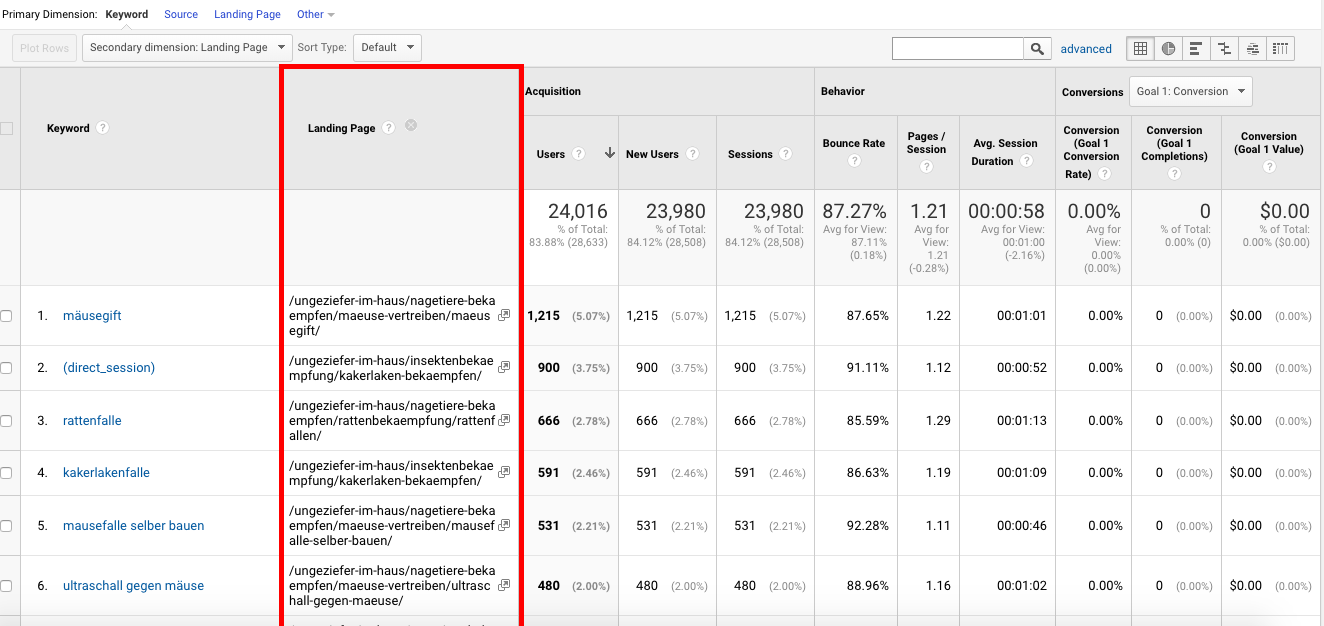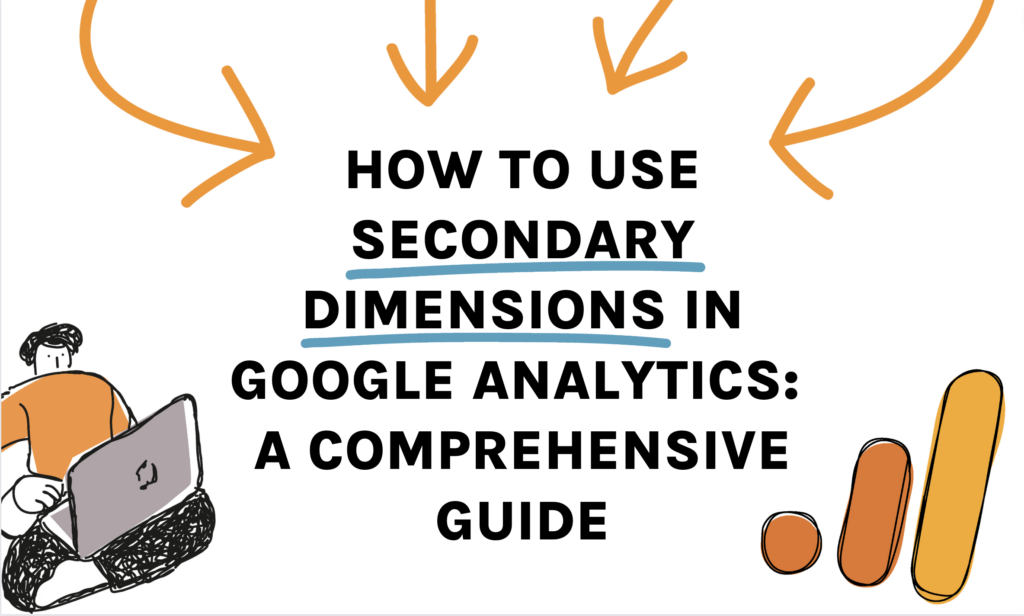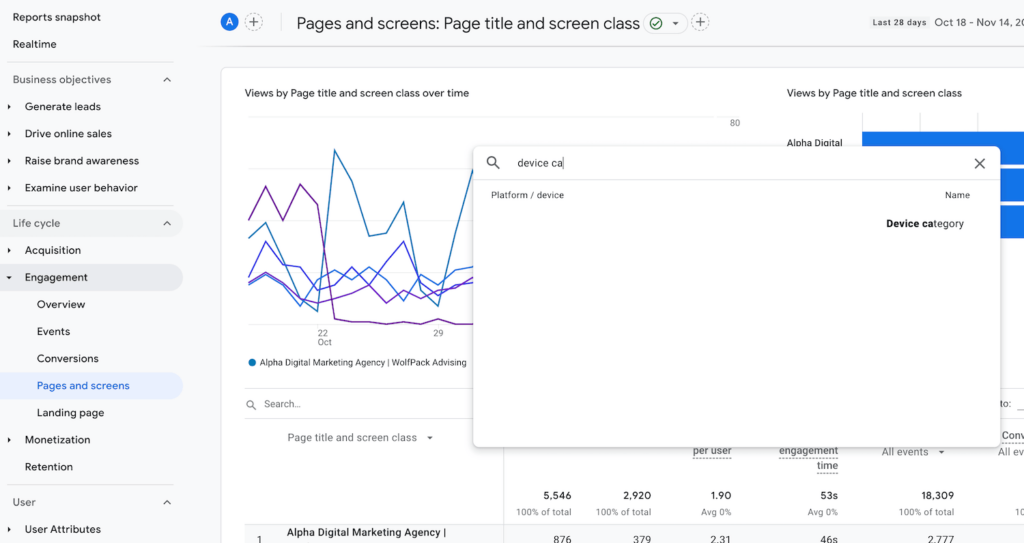Translating the Relevance of Additional Dimension in Google Analytics: Everything About Its Importance and Effect
In the realm of digital analytics, the usage of second dimensions within Google Analytics serves as a pivotal device for critical much deeper layers of data insights. The significance of additional dimensions exists in their ability to give a nuanced view of user behavior and interaction with an internet site or system.
Recognizing Secondary Measurements in Google Analytics
The understanding of additional dimensions in Google Analytics is important for getting deeper understandings into user actions and web site efficiency. While primary measurements offer basic information points such as web traffic resources and web page views, secondary dimensions permit a more nuanced analysis by providing additional context to these primary metrics. By incorporating second dimensions, customers can segment and filter their information to discover patterns and trends that may not be promptly noticeable.

Introducing the Conveniences of Secondary Dimensions
Structure upon the foundational understanding of additional dimensions in Google Analytics, discovering the benefits they provide exposes invaluable understandings for improving information evaluation and decision-making. By incorporating additional measurements, users can delve deeper right into their information, gaining an extra detailed view of user actions, material performance, and various other key metrics. Among the primary benefits is the capability to sector data, enabling an extra granular analysis of various measurements such as website traffic sources, gadgets, demographics, and a lot more. This segmentation makes it possible for individuals to determine patterns, patterns, and connections that may not be noticeable when considering data in accumulation.
Furthermore, secondary dimensions give context to key information, supplying added layers of info that can assist in understanding user interactions and preferences. This enhanced understanding can lead tactical decision-making, bring about more targeted advertising projects, website optimizations, and overall improved efficiency. Essentially, additional measurements function as an effective tool for unlocking deeper understandings and taking full advantage of the utility of Google Analytics for companies and website owners.
Leveraging Secondary Dimensions for Enhanced Insights
By harnessing the power of secondary measurements in Google Analytics, services can discover much deeper insights that drive informed calculated and decision-making optimization initiatives. Leveraging additional measurements enables services to dive beyond surface-level information and get a more comprehensive understanding of customer actions, audience demographics, website traffic sources, and internet site performance. For instance, by integrating key measurements like website traffic sources with second dimensions such as geographic location or gadget classification, services can recognize which regions or gadgets are driving one of the most valuable traffic to their web site.
Moreover, second dimensions enable organizations to section and assess information extra effectively, assisting them recognize patterns, patterns, and chances that might have otherwise gone unnoticed. By utilizing second measurements, businesses can customize their advertising and marketing techniques, web Look At This content, and user experience to far better satisfy the requirements and choices of their target market. In essence, leveraging additional dimensions in Google Analytics empowers organizations to make data-driven choices that bring about improved performance, enhanced ROI, and sustainable development.

Effect of Second Measurements on Information Analysis
Enhancing data evaluation via the application of additional measurements in Google Analytics gives companies with a deeper understanding of their on-line efficiency metrics. By incorporating second dimensions, such as time of day, geographical location, or device group, companies can discover valuable insights that may have been neglected with key measurements alone. This boosted degree of granularity permits more exact segmentation of data, allowing businesses to determine patterns, patterns, and correlations that can drive critical decision-making.

Taking Full Advantage Of Prospective: Secondary Capacities Methods
The calculated application of additional dimensions in Google Analytics prolongs past enhancing information evaluation; it entails crafting targeted strategies to open the full capacity of important understandings for service growth. By utilizing additional measurements properly, organizations can delve deeper right into their website traffic, user habits, and marketing projects to extract actionable understandings. One essential technique is to integrate additional dimensions with primary measurements to get a comprehensive sight of individual interactions. For example, combining the main measurement of 'source/medium' with secondary dimensions like 'touchdown web page' or 'gadget group' can reveal which networks are driving website traffic to certain web pages or how user behavior differs across tools.
Moreover, utilizing additional measurements to section information based on individual demographics, habits, or like it modern technology can help organizations customize their marketing efforts to certain audience sectors. This targeted technique can bring about improved conversion rates, improved user experiences, and inevitably, enhanced ROI. By optimizing the potential of second measurements in Google Analytics, organizations can make enlightened choices, optimize their on the internet existence, and drive sustainable growth.
Final Thought
In verdict, additional measurements in Google Analytics play an important duty in giving deeper insights and enhancing data evaluation. Incorporating second check my reference dimensions into data analysis approaches can lead to even more informed decision-making and boosted total performance.
While key measurements offer fundamental data factors such as website traffic sources and web page sights, secondary dimensions permit for a much more nuanced evaluation by giving extra context to these key metrics. By incorporating primary measurements like traffic resources with secondary dimensions such as geographical area or device category, services can recognize which regions or gadgets are driving the most important traffic to their internet site.
By including additional dimensions, such as time of day, geographic place, or device classification, companies can uncover valuable understandings that might have been forgotten with key measurements alone. One vital approach is to integrate second measurements with primary measurements to obtain a detailed view of individual interactions. Matching the key measurement of 'source/medium' with second dimensions like 'touchdown web page' or 'tool group' can disclose which channels are driving web traffic to details web pages or just how individual habits differs throughout devices.